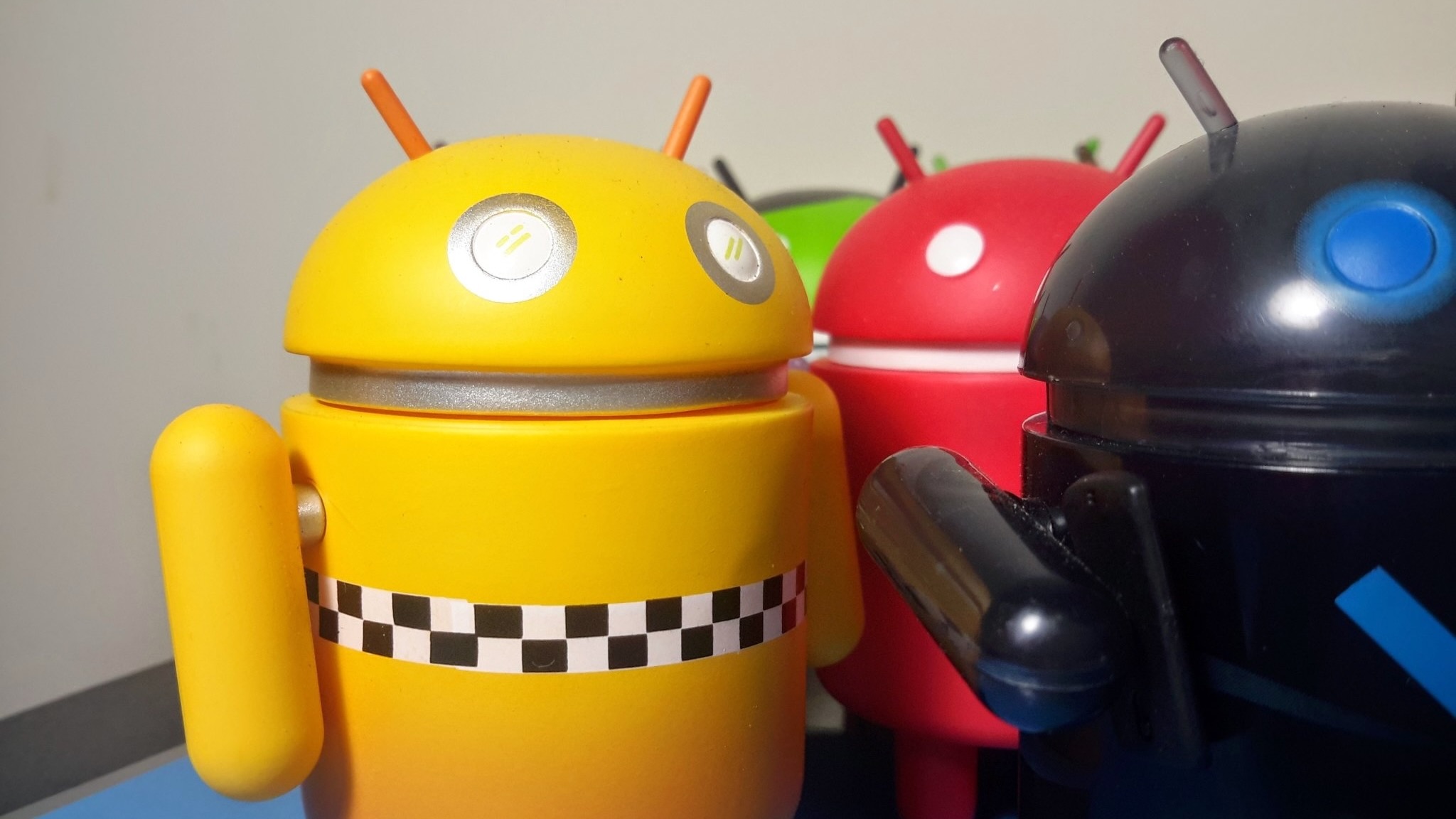OnePlus Watch 3 vs. Watch 2: A massive generational gap
The OnePlus Watch 3 has key upgrades to the design, display, battery life, health sensors, performance, GPS, and more.
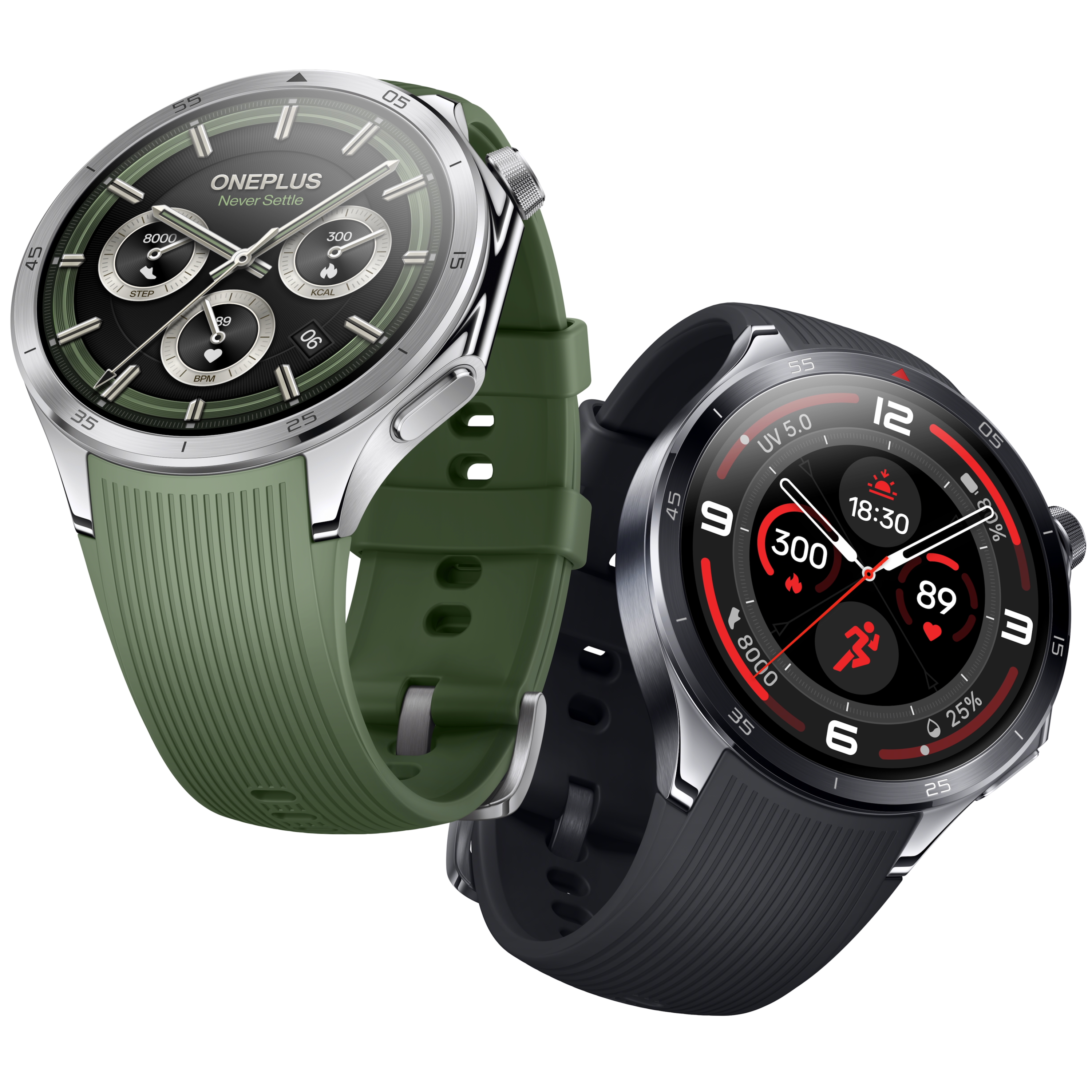
Major upgrade
While other Android smartwatches release more iterative annual updates, OnePlus knew it had a lot of fixes to make with the OnePlus Watch 3. This watch has significant upgrades across the board, primarily battery life, health data, and the display, but with more subtle improvements, too.
For
- Larger, smoother display with titanium bezel
- Redesigned health sensor with ECG, skin temp
- Crown is now functional
- Extra day of heavy-duty use
- Faster co-processor for background tasks
Against
- Still no smaller option, LTE
- ECG not available in North America
- Only two years of software support
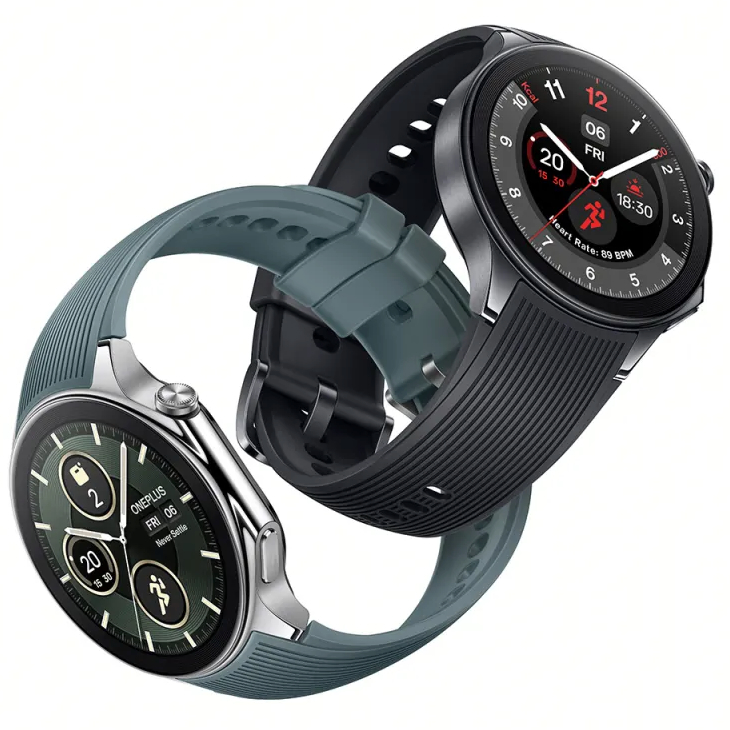
Work in progress
OnePlus's first Wear OS watch made a splash because of its long battery life, but we found minor issues in areas like performance and health tracking that made it harder to recommend. This watch will still beat rivals for battery life and technically matches the Watch 3 for performance, but it's harder to recommend now.
For
- Excellent battery life only a day short of Watch 3
- Fast VOOC charging
- Same Snapdragon chipset, memory
- Equally durable design
Against
- Nonfunctional crown
- Unreliable last-gen MCU
- No ECG, skin temp
- Arguably less stylish
- Had documented issues with activity tracking
When you weigh the OnePlus Watch 3 vs. Watch 2, you'll find there's much more that's changed than just the extra battery life. The design has functional and stylistic changes, the performance has a subtle boost, new sensors give you a wider range of health metrics, and the display has a noticeable boost in several areas.
That said, the OnePlus Watch 2 takes after the Watch 3 in predictable ways, and if you're hunting for a deal and considering the last-gen watch, this OnePlus Watch 3 vs. Watch 2 guide will help you make your decision!
Starting with everything that's unchanged between the two, let's dive through the key differences between these two excellent Android smartwatches, based on our hands-on time with the OnePlus Watch 3 and the official specs.
Category | OnePlus Watch 3 | OnePlus Watch 2 |
|---|---|---|
Materials | Titanium bezel, stainless steel case, sapphire crystal glass | Stainless steel case/bezel, sapphire crystal glass |
Protection | MIL-STD-810H, IP68, 5ATM | MIL-STD-810H, IP68, 5ATM |
Dimensions | 46.6 x 47.6 x 11.75mm | 46.6 x 47.0 x 12.1mm |
Weight (without/ with strap) | 49.7g / 81g | 49g / 80g |
Display | 1.5-inch (466x466) LTPO AMOLED, 2,200 nits brightness | 1.43-inch (466x466) AMOLED, 600 nits brightness |
Processor | Snapdragon W5 SoC, 6nm BES2800 MCU, 32GB | Snapdragon W5 SoC, 12nm BES2700 MCU |
Memory | 2GB RAM, 32GB storage | 2GB RAM, 32GB storage |
OS | Wear OS 5 (+ 2 version updates) and RTOS | Wear OS 4 (+ 2 version updates) and RTOS |
Battery | 631mAh; 120 hours (smart mode); 72 hours (heavy use); 16 days (power saver mode) | 500mAh; 100 hours (smart mode); 48 hours (heavy use); 12 days (power saver mode) |
Charging | 24 hours in 10 minutes; 100% in 60 minutes | 24 hours in 10 minutes; 100% in 60 minutes |
Sensors | Optical HR, SpO2, ECG, wrist temperature, accelerometer, barometer, geomagnetic, gyroscope, light | Optical HR, SpO2, accelerometer, barometer, geomagnetic, gyroscope, light |
Connectivity | Bluetooth 5.2, WiFi 2.4/5GHz, NFC, | Bluetooth 5.0, WiFi 2.4/5GHz, NFC |
Tracking | GPS (L1 + L5), Beidou, Galileo, GLONASS, QZSS | GPS (L1 + L5), Beidou, Galileo, GLONASS, QZSS |
OnePlus Watch 3 vs. Watch 2: What's the same?
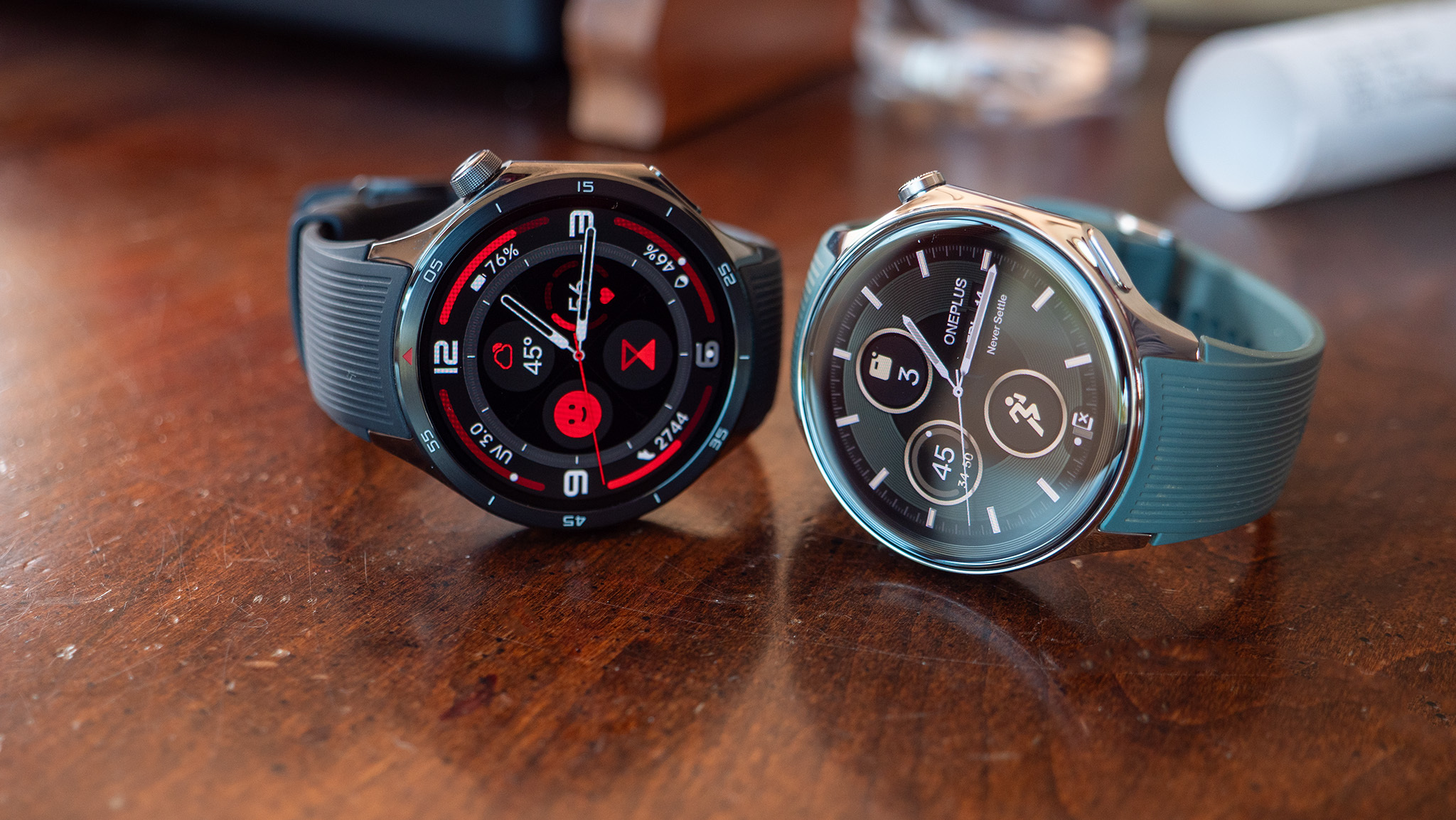
These are the key features and design elements that are either unchanged or virtually identical between the OnePlus Watch 3 and Watch 2:
Processor and memory: Both watches use the Snapdragon W5 Gen 1, a chip that launched in 2022, with 2GB of RAM and 32GB of storage. They do have different coprocessors, but we'll discuss that later. Essentially, you'll get the same performance speed as other Wear OS watches like the Pixel Watch 3 and TicWatch Pro 5 Enduro.
Updates: Although the OnePlus Watch 2 and 3 launched with Wear OS 4 and OS 5, respectively, both watches will receive two version updates and two years of security updates and will share the same features once the Watch 2 updates. This puts OnePlus behind Google (3 OS updates) and Samsung (4 OS updates).
Straps: Both watches use 22mm fluororubber straps with stainless steel buckles; unlike other Android watches, the OnePlus Watch 3 and 2 use standard 22mm lugs, so you can use whichever compatible bands you want. We will ask OnePlus whether its fluoroelastomer material has any issues with toxicity and update if we hear back.
Be an expert in 5 minutes
Get the latest news from Android Central, your trusted companion in the world of Android
OnePlus did say it implemented a "new curved strap design that enhances the wraparound fit" for more accurate sensor data, but otherwise, it should feel fairly similar; our tested found that he didn't notice a real difference in comfort.
Overall size, feel, and colors: We'll discuss what's changed, design-wise, in the next section, but generally speaking, you're getting a 47mm stainless steel watch that weighs about 80g/2.8 ounces and measures about 13mm thick when you take the sensors into account. OnePlus didn't announce a smaller model for the Watch 2 or 3, which could be a deal-breaker for those with smaller wrists.
Also, the OnePlus Watch 2 and 3 come in two similar finishes. They have different names — Obsidian Titanium/ Black Steel and Emerald Titanium/ Radiant Steel — but it's essentially the same black and silver options as before.
Durability: Both watches have the same dust and water resistance (IP68), though not at the same IP69 rating as the OnePlus 13. OnePlus lists a wide range of military-grade durability tests that the Watch 3 (and 2) passed, including high/low temperature, solar radiation, 96-hour salt spray, vibration, impact, acidic atmosphere, and freezing rain. It's not bulletproof but as rugged as you'd hope for in an Android watch.
OnePlus Watch 3 vs. Watch 2: Design and display
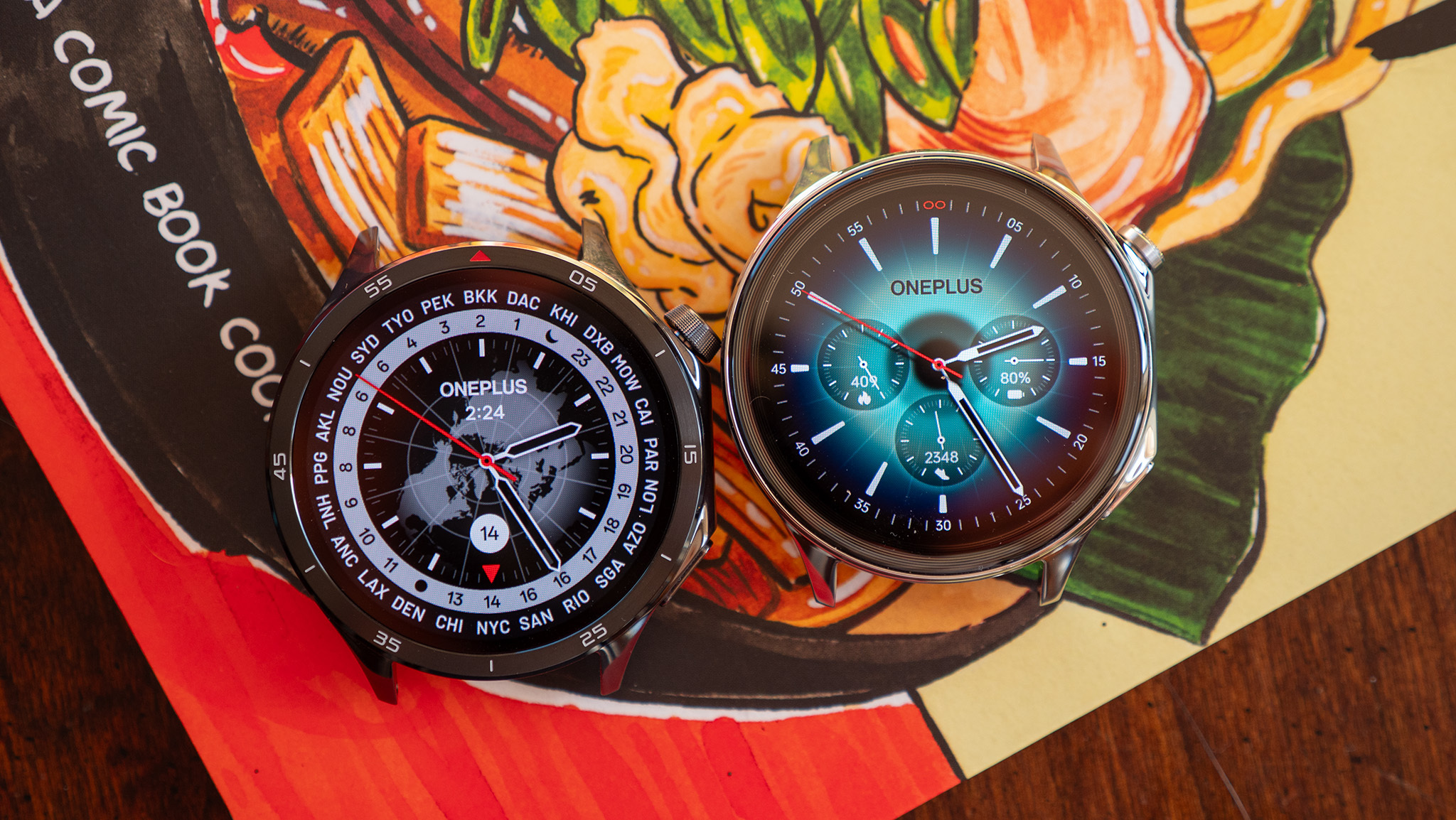
Despite being the same general size, the OnePlus Watch 3 has a new titanium bezel instead of stainless steel, adding a metallic sheen around the edge where the OnePlus Watch 2 had a "sizeable bezel" enveloping the display that annoyed our reviewer.
Removing that wasted space, OnePlus gave the Watch 3 a 1.5-inch display, a slight visual boost over the 1.43-inch Watch 2. That matches larger Android watches like the Galaxy Watch Ultra. We're a little surprised that OnePlus didn't increase the resolution to match the size increase; both watches have 466 x 466 resolution, so the Watch 2's pixels per inch ratio is slightly more dense (~15ppi).
Still, the OnePlus Watch 3 display has more significant upgrades that make it the clear winner: It hits a peak brightness of 2,200 nits instead of 600 nits and uses an LTPO AMOLED material capable of dipping as low as 1Hz to save battery life.
Interestingly, our OnePlus Watch 3 tester found there wasn't much visual difference between the two in direct sunlight. He instead appreciated that the Watch 3 uses DC dimming at all brightness levels instead of PWM, which can cause headaches for susceptible people.
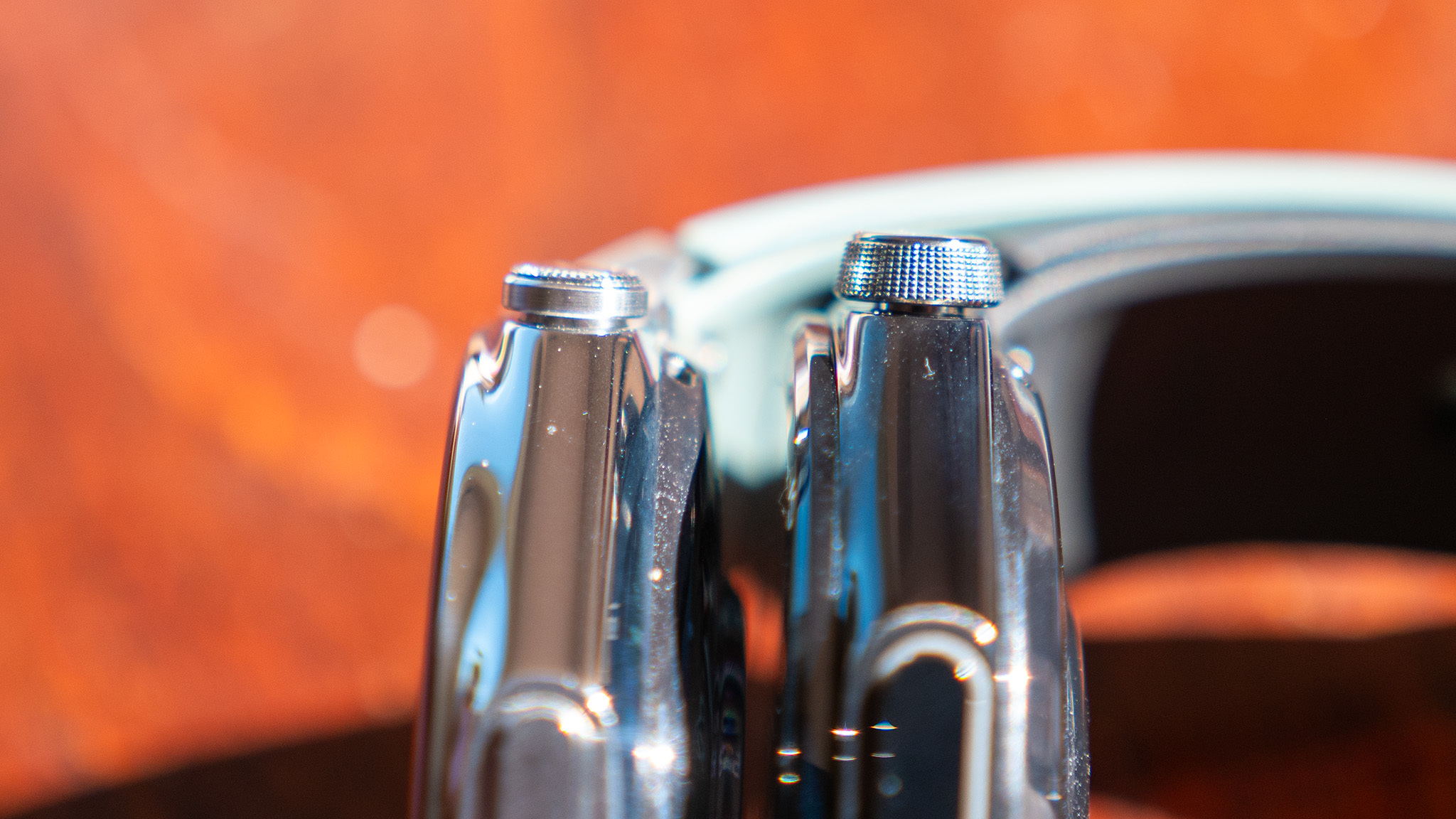
Overall, the OnePlus Watch 3 design looks more like a sports watch thanks to its 60-second scale around the titanium bezel, similar to the OnePlus Watch 2R. The latter did well in our recent smartwatch beauty pageant, and I think it's no surprise that OnePlus realized that this style would make its mainline watches look more distinct.
OnePlus annoyed some Watch 2 owners by adding a decorative crown with no actual navigational abilities. Hearing that criticism, it converted the OnePlus Watch 3 crown to be functional: you can rotate through menus and press it to select options, so you're no longer fully touch-dependent.
The crown has a "tapered, pyramid-pattern" texture that's easy to twist. Our tester praised it as the "best crown I've used on any watch to date," noting that it's large enough for your finger to rest comfortably on it, it has a nice tactility, and the haptics feel great when twisted.
OnePlus Watch 3 vs. Watch 2: Performance, battery life, and charging
Even though these watches share a main processor and RAM, the Watch 3 switches to a new coprocessor called the BES2800 for background RTOS tasks. Built on 6nm FinFET tech, it's supposed to have a 200% CPU boost and 400% NPU boost over the 12nm BES2700 in the Watch 2.
When reviewing last year's Watch 2, our reviewer complained that things didn't work reliably because of the dual-OS solution; we have reason to hope that this upgrade on the Watch 3 will solve some of his problems, like health-tracking inaccuracies and dropped notifications.

In terms of battery life, there's an obvious 131mAh capacity increase, but OnePlus pulled this off while making the Watch 3 slightly skinnier because of the new silicone-carbon battery tech, which OnePlus calls Silicon NanoStack Battery. It makes your battery denser, meaning you get more capacity and better durability against extreme temperatures while using less space.
So far, we've found the OnePlus Watch 3 can easily last an estimated five days, including with daily workouts, but our initial hands-on test didn't include sleep tracking. Your personal battery mileage may vary, but generally speaking, both watches are much longer-lived than the average smartwatch; the Watch 3 simply gives you a bit more leeway if you're a power user who frequently makes on-wrist calls, streams music to Bluetooth earbuds, or does a lot of GPS workouts.
Equally important, both watches support VOOC fast charging that gives you about a day of battery life in 10 minutes. Interestingly, our OnePlus Watch 3 tester found he could charge it from 20% to 100% in just 30 minutes, while the Watch 2 took about an hour to charge fully. OnePlus didn't announce a charging speed increase, but it appears that the Watch 3 charges faster despite its larger capacity.
OnePlus Watch 3 vs. Watch 2: Sensors and connectivity
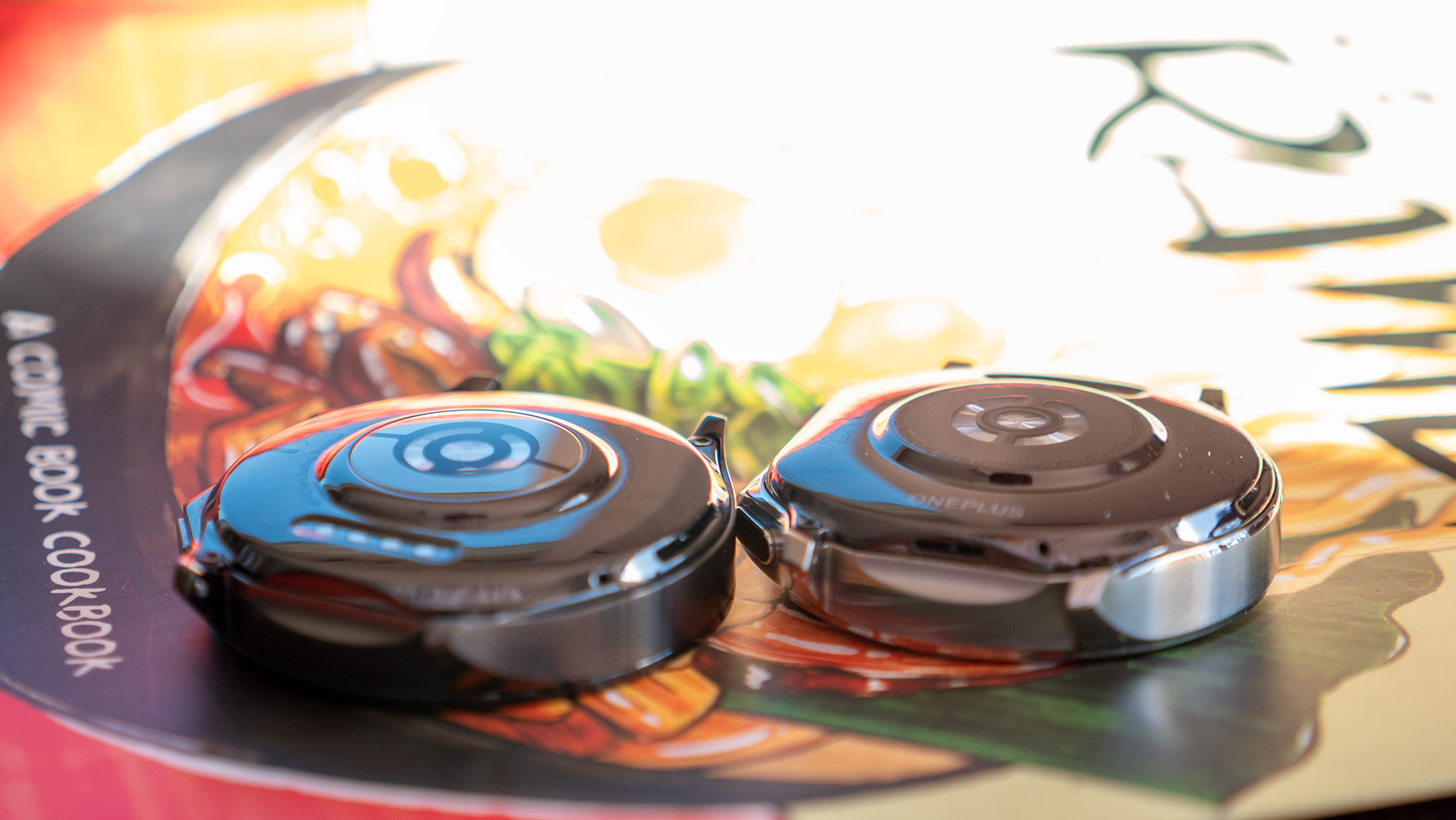
While both OnePlus Watches have 8-channel optical heart rate sensors and 16-channel blood oxygen (SpO2) sensors, OnePlus is promising much more accurate results on the Watch 3. We found the Watch 2 wasn't especially accurate for workouts, making this a much-needed improvement.
Reportedly, the OnePlus Watch 3 has a new back cover glass that improves LED efficiency and a redesigned sensor layout "to reduce the distance between the LED and photodetector" to ensure "signal quality." OnePlus also says it improved its heart rate algorithm.
This is all on paper, but in our early testing, the OnePlus Watch 3 delivered workout results much closer to that of other smartwatches, whereas the Watch 2 often had curiously deflated results.
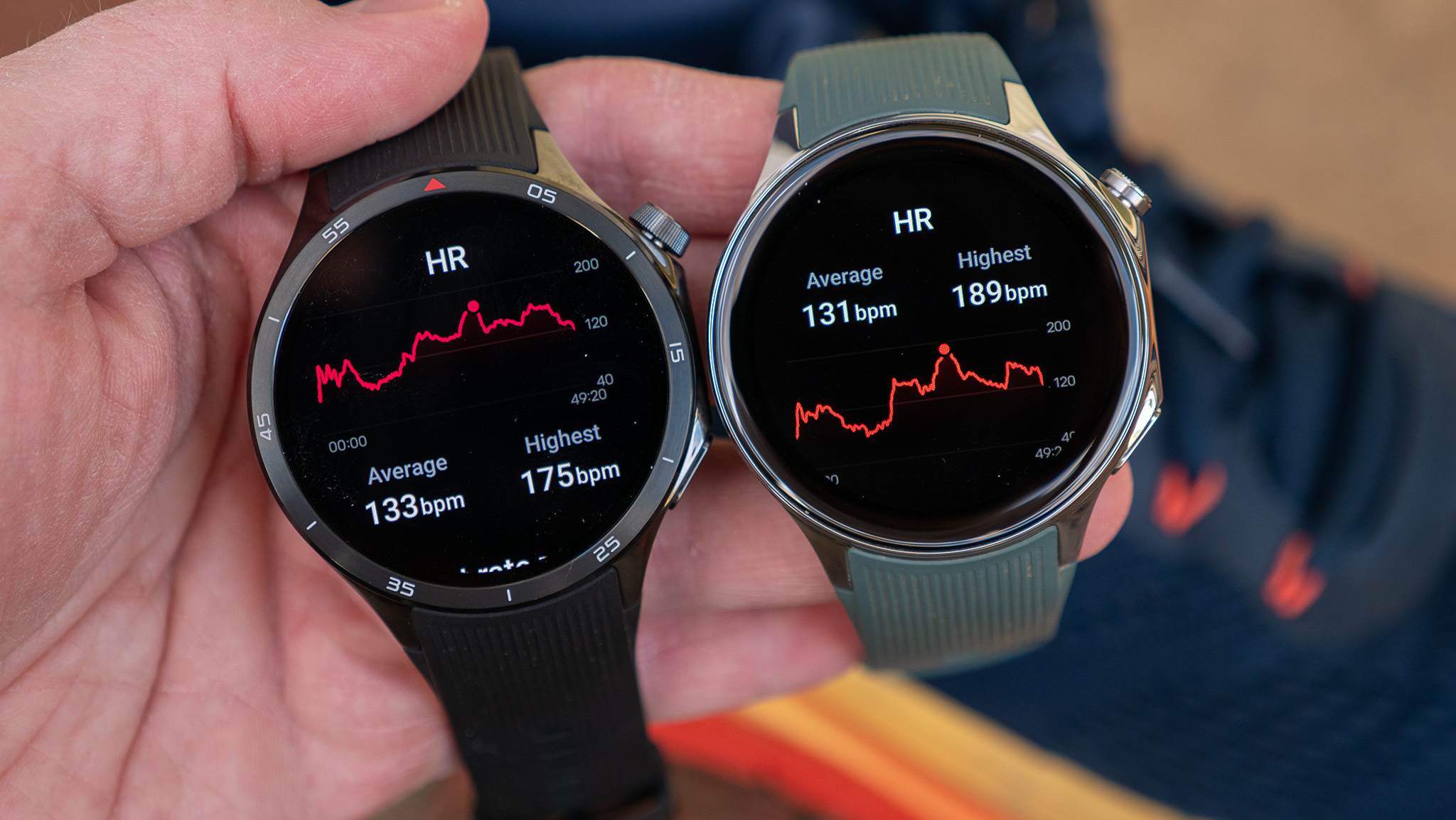
Aside from improved accuracy, the OnePlus Watch 3 added an "ECG Analyzer" to judge your heart health; unfortunately, it won't be available in the United States or Canada because OnePlus chose not to try and get FDA certification as a "business decision" to save money.
OnePlus is adding a 60-second health check-in to the Watch 3 starting in March 2025 that'll analyze your vascular age, heart rate, SpO2, mental wellness, sleep quality, wrist temperature, and (in Europe and Asia) ECG data. Your vascular health, or arterial stiffness risk, will be a new major focus with its own app and tile, aiming to catch hypertension issues.
In addition, OnePlus is offering new sleep data insights in the OHealth app — though we suspect some of them will come to the Watch 2, as well. Essentially, you'll be able to check your sleep score/duration, respiratory rate, HRV, body movement, snoring levels, and your resting heart rate compared to your typical baseline.
But the big new addition is skin temperature. You must wear the watch for at least four hours of sleep tracking per night for five days; after that, OnePlus will have a temperature baseline to compare against, warning you if your health check or overnight temperature appears elevated.

On the connectivity front, OnePlus upgraded the Bluetooth chip from 5.0 to 5.2 for the Watch 3, but the Wi-Fi standard is unchanged. You get NFC for Google Wallet payments, but it appears that OnePlus once again won't offer an LTE upgrade option or ultra-wideband support.
One subtle upgrade is to GPS tracking. The OnePlus Watch 2 had dual-band GPS, but the OnePlus Watch 3 has a new "circular-polarized antenna" that's designed to capture weak signals more reliably and "reduce refraction caused by tall buildings." Plus, it added a new 7nm GPS chip that reportedly reduces power consumption by "over 50%" while speeding up your satellite search.
OnePlus Watch 3 vs. Watch 2: Should you upgrade?
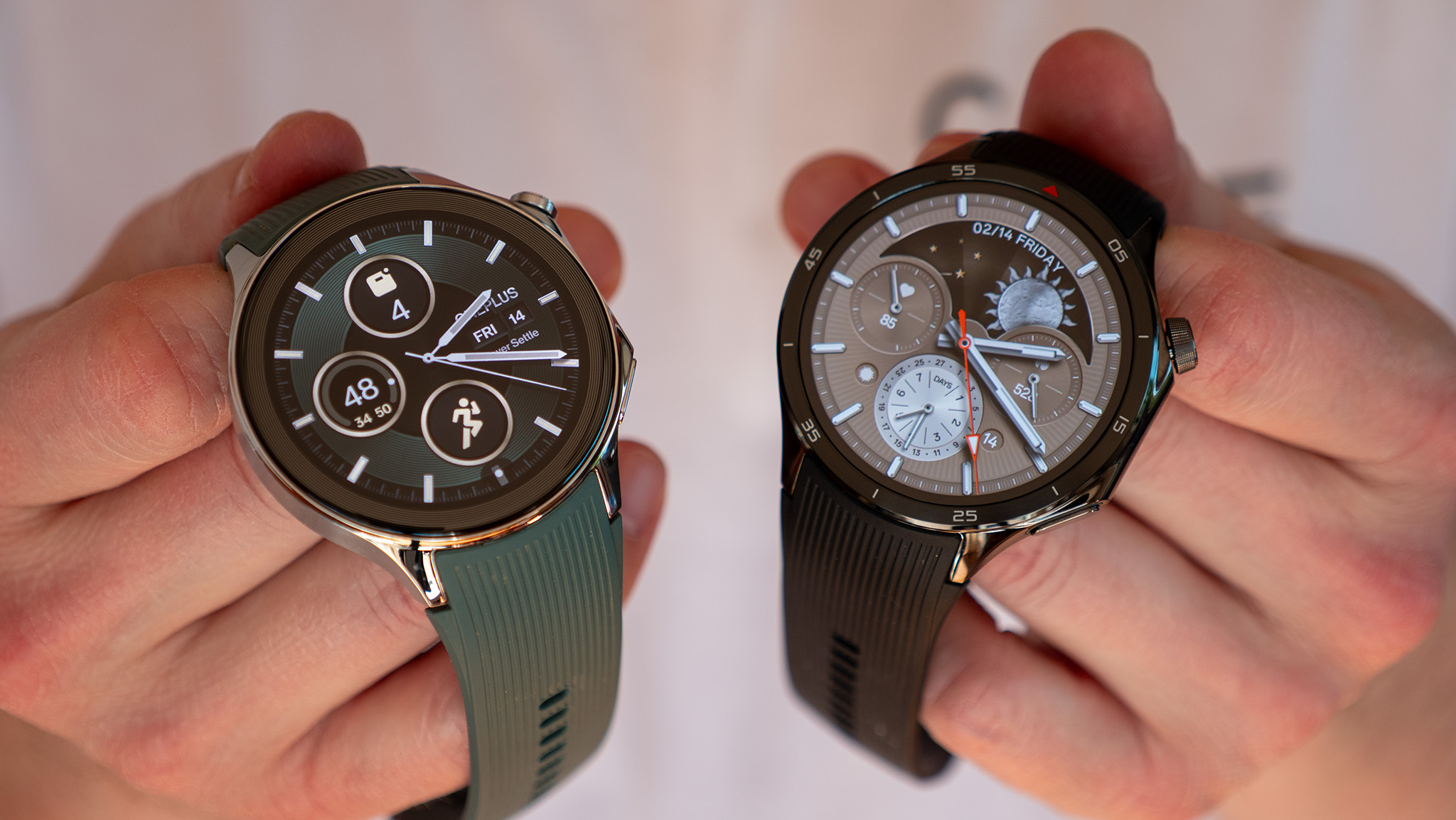
OnePlus kept the same rugged, classic design philosophy for the Watch 3 and 2, and Qualcomm's next Snapdragon chip likely won't be available until later this year, so OnePlus had no upgrade option. But otherwise, this guide should clarify just how many generational changes OnePlus made with the Watch 3! Almost nothing was left unchanged.
If you bought the OnePlus Watch 2, I can't tell you whether it's too soon to upgrade or not, but OnePlus certainly made the Watch 3 tempting.
The upgrades to the background MCU and health sensors, along with subtle OHealth changes, make it more reliable as a fitness watch. The battery life and charging boosts are significant, but the Watch 2 is no slouch in either area. You'll really appreciate the brighter, smoother display, but you may not appreciate the lack of a 1.2- or 1.3-inch option.
Until our OnePlus Watch 3 review lets us test the battery, software, and health data more thoroughly, we can't give a full-throated recommendation. But based on our initial impressions, this is a much stronger Android smartwatch than the Watch 2, and I'd recommend paying extra for the Watch 3 instead of grabbing the Watch 2 on sale.

Next-gen option
Choose the OnePlus Watch 3 to prioritize battery life, behind-the-scenes upgrades to performance and health/ fitness tracking, and classy style. Skip it if you want to wait for the OnePlus Watch 4 to add a new Snapdragon processor or if you can't handle heavy watches.

Last-gen lonvevity
Keep your OnePlus Watch 2 if you're satisfied with its current battery life and don't need a crown; or, buy a new Watch 2 if you'd rather save money and can compromise in areas like health data. Otherwise, seriously consider the OnePlus Watch 3, as the differences are substantial.

Michael is Android Central's resident expert on wearables and fitness. Before joining Android Central, he freelanced for years at Techradar, Wareable, Windows Central, and Digital Trends. Channeling his love of running, he established himself as an expert on fitness watches, testing and reviewing models from Garmin, Fitbit, Samsung, Apple, COROS, Polar, Amazfit, Suunto, and more.
You must confirm your public display name before commenting
Please logout and then login again, you will then be prompted to enter your display name.
